Stuff
Packed. Packed the car. Swam. Drove to St. Pete. Met the very nice group. Gotta get to sleep. This blog post, the 106th in a row, took about 2 hours to prepare (including the image optimizations and creating the composite. It was published just after midnight on Friday morning. Friday is Day 1 of the DeSoto Spring IPT.
The Palouse
There is a single opening due to a cancellation on the Palouse #2 IPT. We will only be able to hold the lone remaining hotel room until next Friday so do not hesitate if you wish to learn from two great leaders. Scroll down for details.
|
This image was with the tripod-mounted Canon EF 600mm f/4L IS II USM lens and the amazing Canon EOS 7D Mark II. ISO 400. Evaluative metering -1 stop: 1/6400 sec. at f/10. Three AF points up from the center AF point/Shutter Button Spot AF was active at the moment of exposure and fell on the edge of the sun. Click here to see the latest version of the Rear Focus Tutorial. Click on the image to see a larger version. Image #1:Exposed for no blinkies on the sun. |
The Sky Too Dark
Even though the sun was relatively well muted by haze, the sky needed to be rendered several stops too dark in order to prevent burning out the sun. The resulting image is not very pleasing and in no way resembles what we saw….
|
This image was with the tripod-mounted Canon EF 600mm f/4L IS II USM lens and the amazing Canon EOS 7D Mark II. ISO 400. Evaluative metering +1 stop: 1/2500 sec. at f/8. Three AF points up from the center AF point/Shutter Button Spot AF was active at the moment of exposure and fell on the edge of the sun. Click here to see the latest version of the Rear Focus Tutorial. Click on the image to see a larger version. Image #2:Exposed for the sky.
|
The Sun Toasted
In this image, exposed properly for the sky, the sun is well over-exposed, toasted, and burned with the RGB values showing 255, 255, 255: detail-less white.
Exposure Question
Exactly how many stops different are the two exposures: 1/6400 sec. at f/10 and 1/2500 sec. at f/8. Please explain your math.
|
This is the composite image created from the two images above. |
The Composite
After converting both images in DPP 4 I brought the two originals into Photoshop and leveled Image #2. Then I painted a Quick Mask of the sun from Image #1 and brought it into Image #1. I added a Regular Layer Mask and then worked for more than 30 minutes on border of the sun…. Lastly I selected the sun, put it on its own layer, and added about 60 points of Structure in NIK Viveza.
|
Card and design by Denise Ippolito. Scroll down here to see lots more of Denise’s Palouse images. |
Palouse #1. The Palouse A Creative Adventure/BIRDS AS ART Instructional Photo-Tour (IPT)/Eastern Washington State. May 29-June 2, 2015/5 Full Days: $1699/Limit 12 photographers/Sold out.
|
Card and design by Arthur Morris/BIRDS AS ART. |
The Palouse A Creative Adventure/BIRDS AS ART Instructional Photo-Tour (IPT)/Eastern Washington State. June 5-9, 2015/5 Full Days: $1699/Limit 12 photographers/One Opening Due to a Cancellation.
Rolling farmlands provide a magical patchwork of textures and colors, especially when viewed from the top of Steptoe Butte where we will likely enjoy spectacular sunrises and possibly a nice sunset or two. We will photograph grand landscapes and mini-scenics of the rolling hills and farm fields. We will take you to some really neat old abandoned barns and farmhouses in idyllic settings. There is no better way to improve your compositional and image design skills and to develop your creativity than to join us for this trip. Two great leaders: Denise Ippolito and Arthur Morris. Photoshop and image sharing sessions when we have the time and energy…. We get up early and stay out late and the days are long.
After 6 days of back-breaking scouting work in early June 2014 we found all of the iconic locations and, in addition, lots of spectacular new old barns and breath-taking landforms and views. We will teach you what makes one situation prime and another seemingly similar one a waste of your time.
What’s included: In-the-field instruction, guidance, lessons, and inspiration, our newfound but very extensive knowledge of the area, all lunches, motel lobby breakfasts, and Photoshop and image sharing sessions when possible.
You will learn and hone both basic and advanced compositional and image design skills. You will learn to get the right exposure every time. You will learn to develop your creative eye. You will learn the basics of HDR (high dynamic range) photography. You will learn a variety of in-camera creative techniques; Canon 5D Mark III bodies are a plus. And most importantly you will learn to see the situation and to create a variety of top-notch images. Do see both of our blogs for lots more on that in the coming weeks. You will learn how the quality and direction of light combine to determine the success of your images. And–please don’t gasp–we will be working quite a bit with sidelight when creating landscapes. Lastly, we will be touching on infrared photography.
A non-refundable $699 deposit is due now. The balance will be due on January 29, 2015. If we do not receive your check for the balance on or before the due date we will try to fill your spot from the waiting list. Whether or not your spot is filled, you will lose your deposit. If not, you can secure your spot by paying your balance.
With the unpredictable nature of the photography business, I have not said this often lately, but it seems quite likely that this one will fill up very quickly. Please let me know via e-mail that you will be joining us. Then you can either call Jim or Jennifer at 863-692-0906 during business hours or send us a check; the latter is preferred.
Please send your deposit check made out to “Arthur Morris” to us at Arthur Morris/BIRDS AS ART, PO Box 7245, Indian Lake Estates, FL, 33855. If you have any questions, please feel free to contact me via e-mail.
Be sure to like and follow BAA on Facebook by clicking on the logo link upper right. Tanks a stack!
Support the BAA Blog. Support the BAA Bulletins: Shop B&H here!
We want and need to keep providing you with the latest free information, photography and Photoshop lessons, and all manner of related information. Show your appreciation by making your purchases immediately after clicking on any of our B&H or Amazon Affiliate links in this blog post. Remember, B&H ain’t just photography!
Amazon.com
Those who prefer to support BAA by shopping with Amazon may use this link:
Amazon Canada
Many kind folks from north of the border, eh, have e-mailed stating that they would love to help us out by using one of our affiliate links but that living in Canada and doing so presents numerous problems. Now, they can help us out by using our Amazon Canada affiliate link by starting their searches by clicking here. Many thanks to those who have written.
Typos
In all blog posts and Bulletins, feel free to e-mail or to leave a comment regarding any typos or errors. Just be right :).

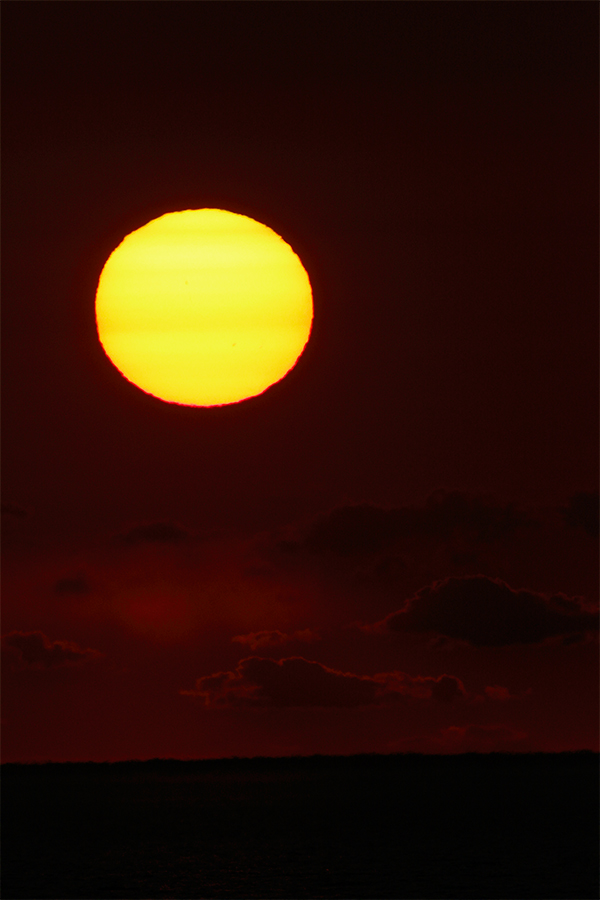
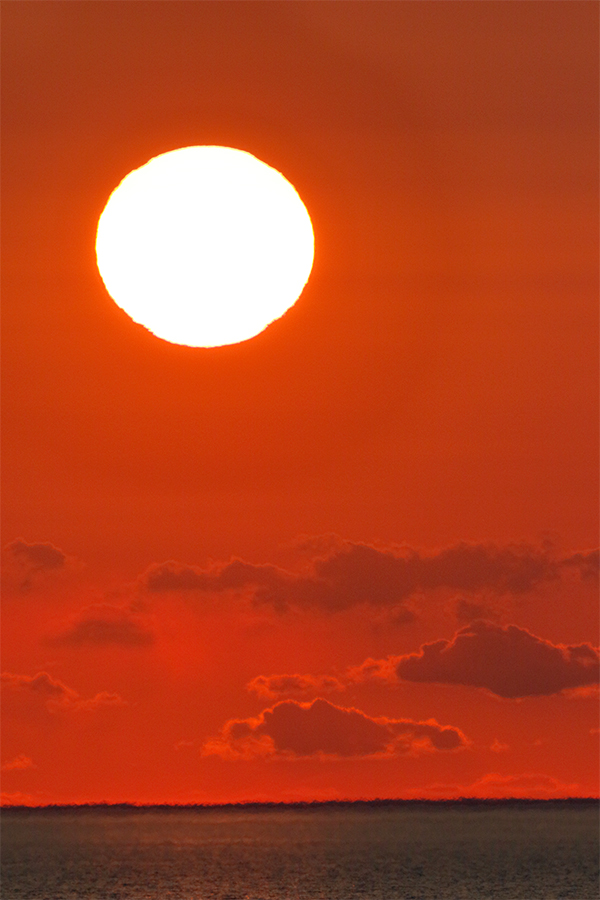
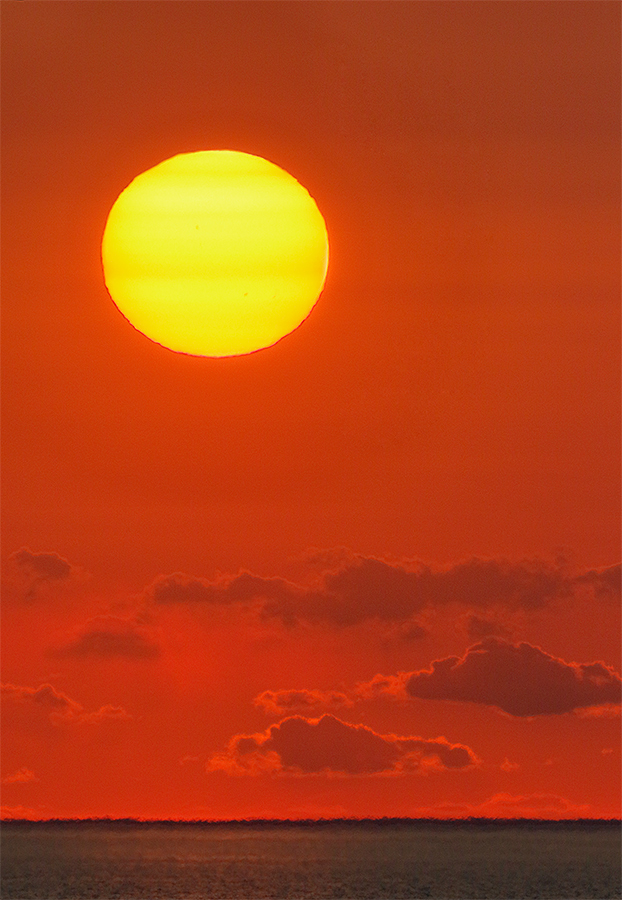
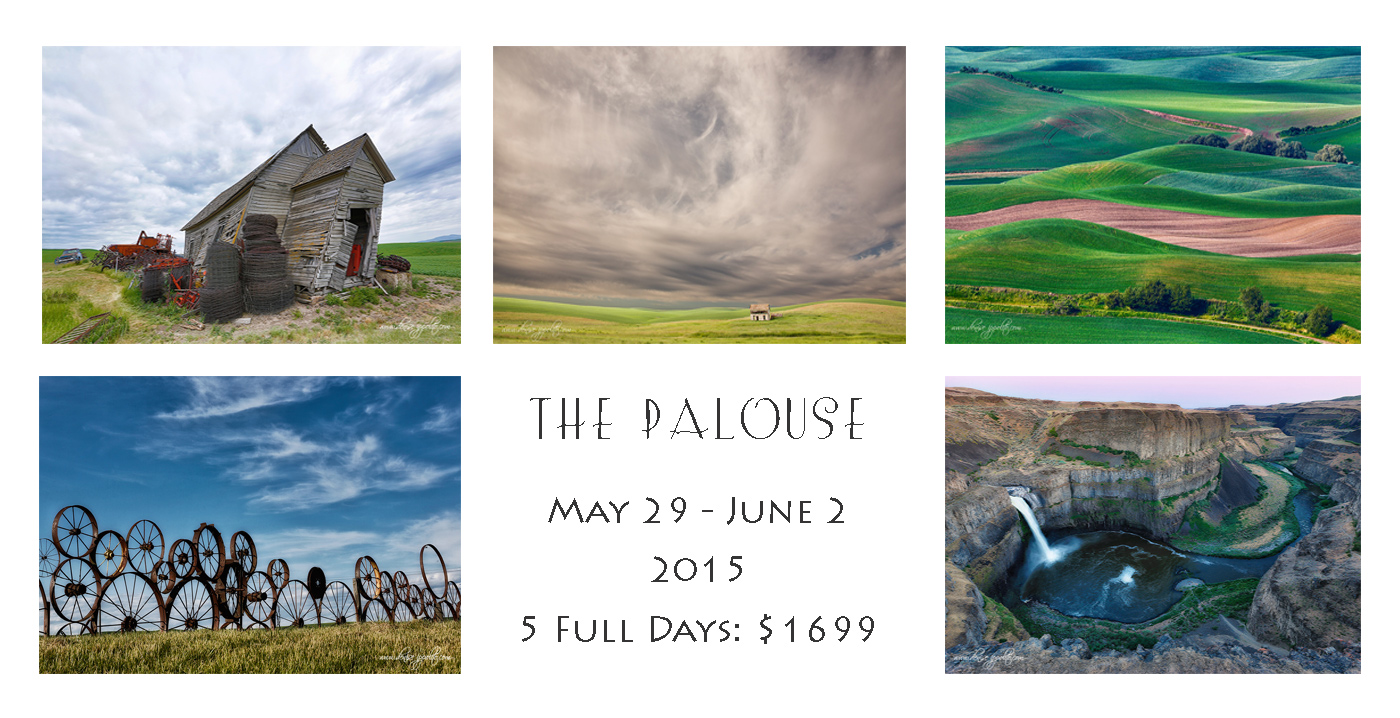
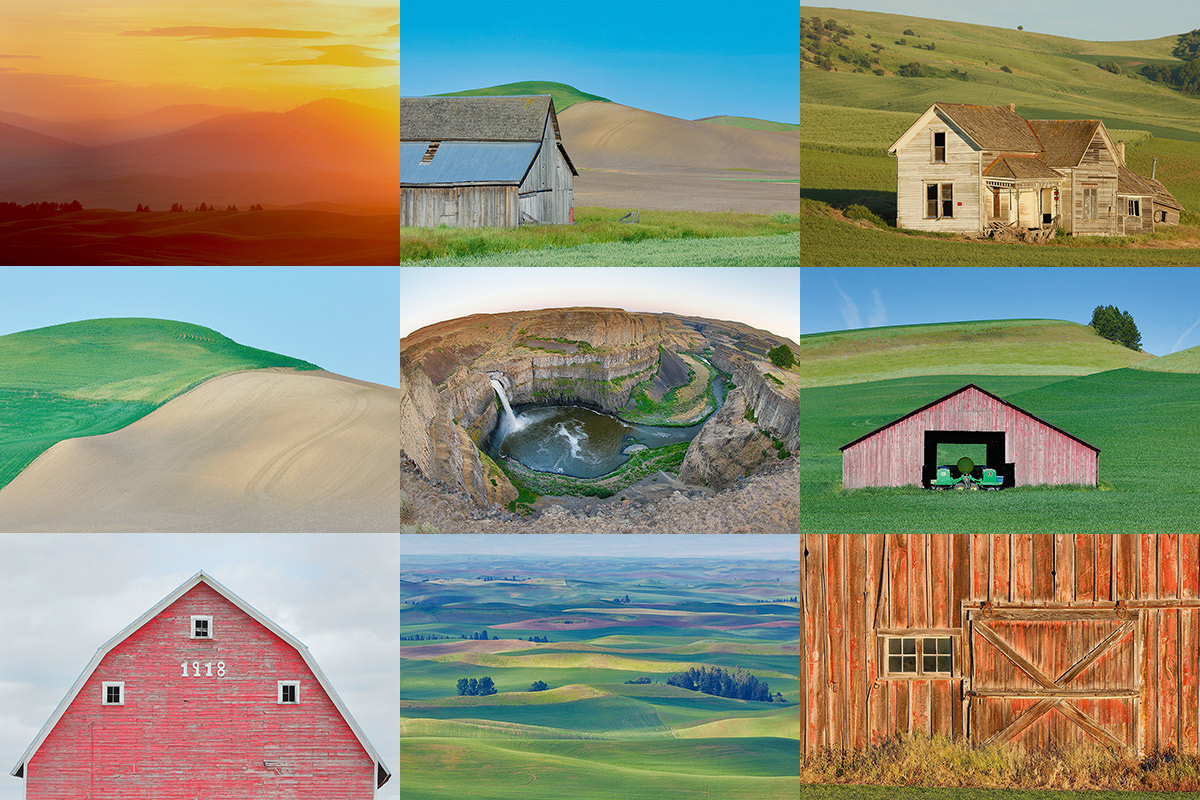













The answer is 4 stops. F stops are related by the square. i.e. F56. Allows twice the light as f8. Square 5.6=31.36, square 8=64. 64/31.36 =2.04 close enough to 2.
Take 2500*8^2=160,000
6400*10^2=640,000
^ is the symbol for square
Divide 640,000/160,000= 4
So 4 stops
Why not shoot a 5 or 7 frame HDR? I have never HDR-ed in my life. The new Lightroom does this so well and easy.
Even a 3-frame HDR is a viable solution. a
I’ll skip the maths; makes my brain hurt.
I just wanted to say that the clouds in the first image look great, might be some room for an interesting “out of the box” image.
2 Stops
Similar to David P, but I estimated the shutter speed change to only be 1/3 of a stop. (1/2500 is closer to 1/3200 (700) than 1/1600 (900) and when you work with 1/3 stop intervals, the camera can’t do 1/5 intervals). Therefore, I get 1 1/3 stops change with shutter speed and 2/3 change with aperture using the same logic (f/11 to f/8 is 1 stop, so f/10 to f/8 should be 2/3 stop). So final change is 2 full stops.
I do have a question, why would you open the aperture up to get more light on the second shot, since the “landscape” elements of water clouds, etc. will be mainly used from this shot? Couldn’t you have just slowed the shutter a little more? Or did you know f/8 was still plenty depth of field at that great distance?
Thanks!
Warren
Hi Warren,
You got me thinking. I went back and checked on my camera and you are right. EV increased by thirds go one over 3200,2500,2000 and 1600.
So 2 stops is correct. I would go back and correct my post but not sure if I can do that. Regarding your half stop comment, You may find you can set your camera to half stop increments for both Aperture and shutter speed by changing the settings in a menu . I prefer one third stops for more precise control over exposure so I don’t use the half stop option.
Good question, by the way, about the change in aperture for the second image. Artie shows evaluative metering -1 stop for the first image and +1 stop for the second one. That’s two stops and much easier maths by the way. Saves crunching the numbers.. I bet he’s checking our observation skills, not our maths. I know Artie often says to set up and shoot in manual mode after a single test exposure. So from his test shot he has dialled in minus one EV to get the sun how he would like it. Then still in manual mode he has increased exposure partly by changing aperture to f8 and gone the rest of the way to 2 stops change (+1) using the slower shutter speed.
MTCW
Kind regards
David. Peake
Good morning,
I’m thinking 1/6400 to 1/2500 is 1 1/3 stops and f/10 to f/8 is 2/3 so the total difference would be 2 stops.
If I did my math right, which I probably didn’t since
I got D’s in every math class, I came out with 2 stops.
I used the EV formula, which I’m not even going to attempt
to try and type out here 🙂
Doug
Hi Artie,
I think I can do this one.
Using shutter speed, exposure is increased from 1/6400 to 1/2500. That’s one stop at 1/3200, two stops would be 1/1600 . So at 1/2500 i would call that half a stop. So that’s 1 1/2 stops increase.
Add on the change of aperture . F10 to f8 ? F11 to f8 is a whole stop so I would call this about 2/3 of a stop increase in exposure .
Add 1.5 ( 1 1/2). + 0.66 (2/3) = 2.16 stops of light increase in exposure.
I think that would be around 5 times the brightness between the sun and the sky. Amirite?
Happy shooting at IPT.
Kind regards,
David Peake.
Shooting Fuji while my Canon gets fixed.